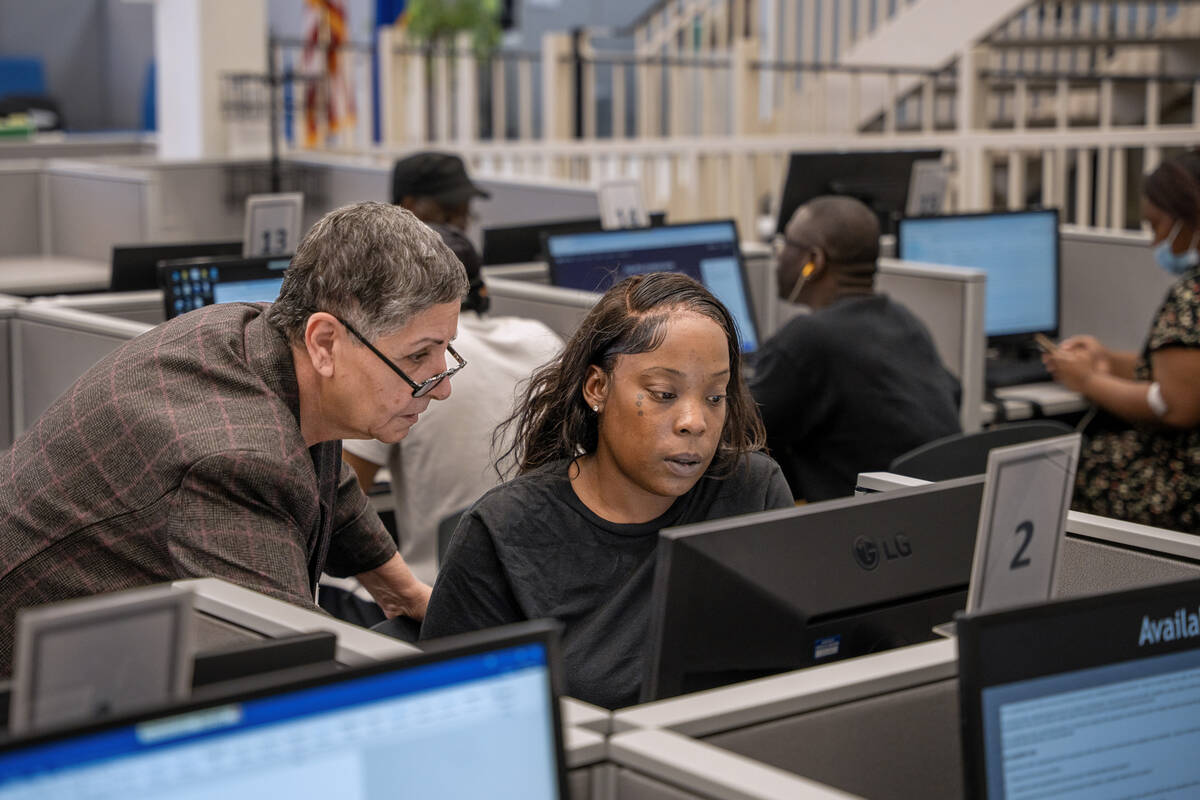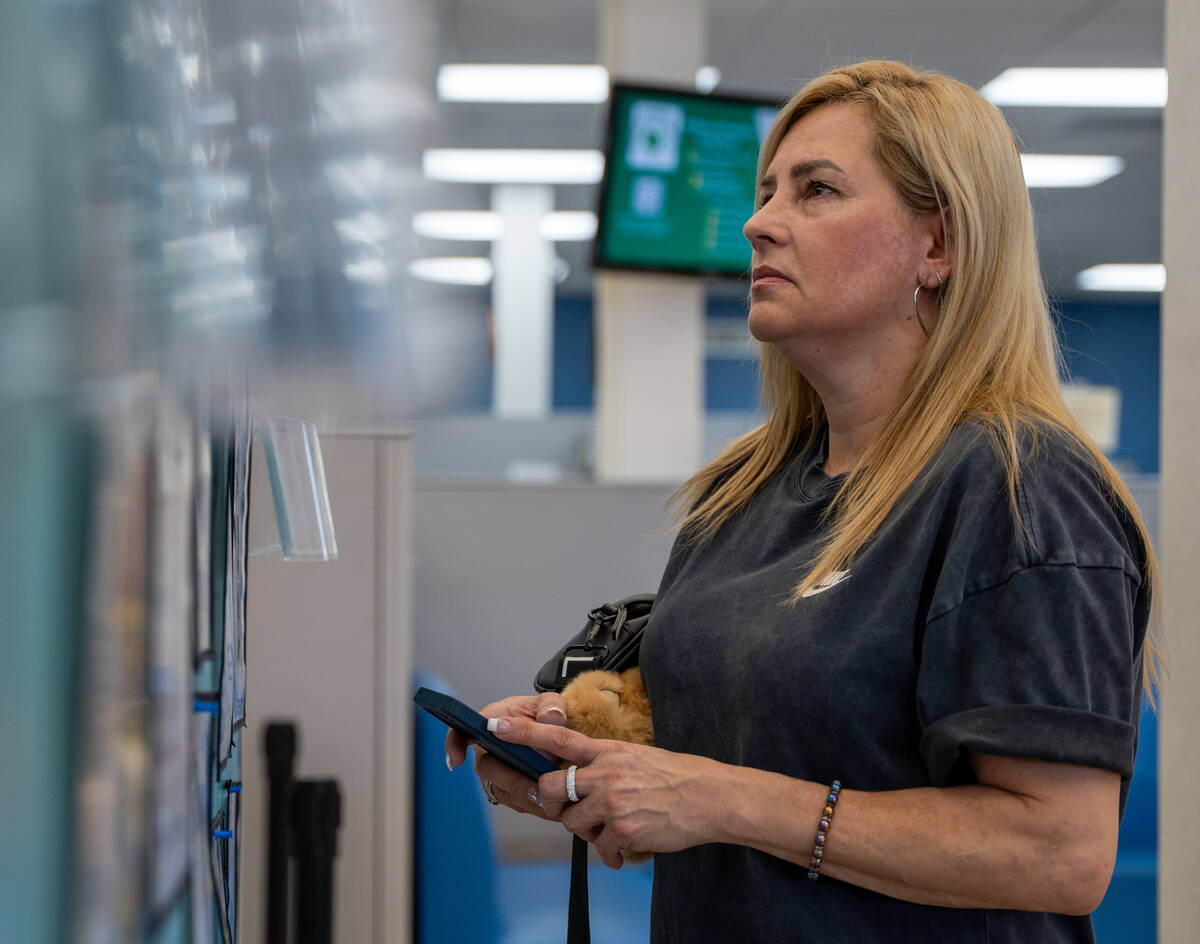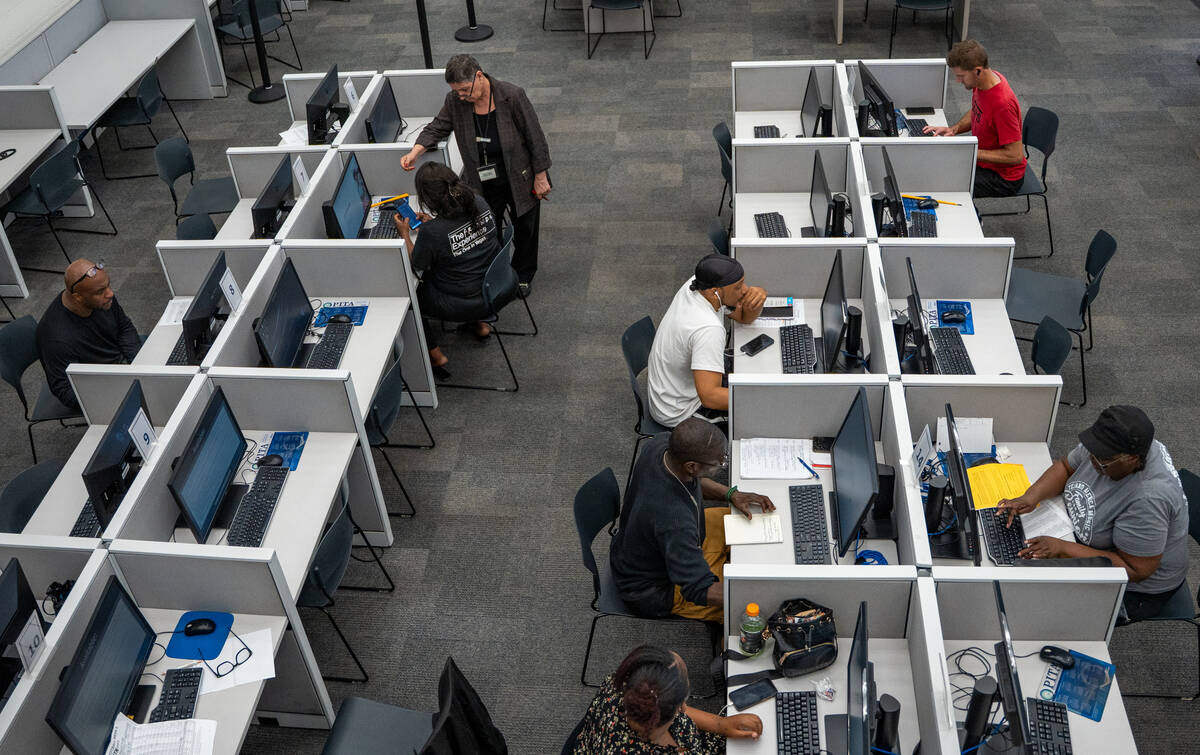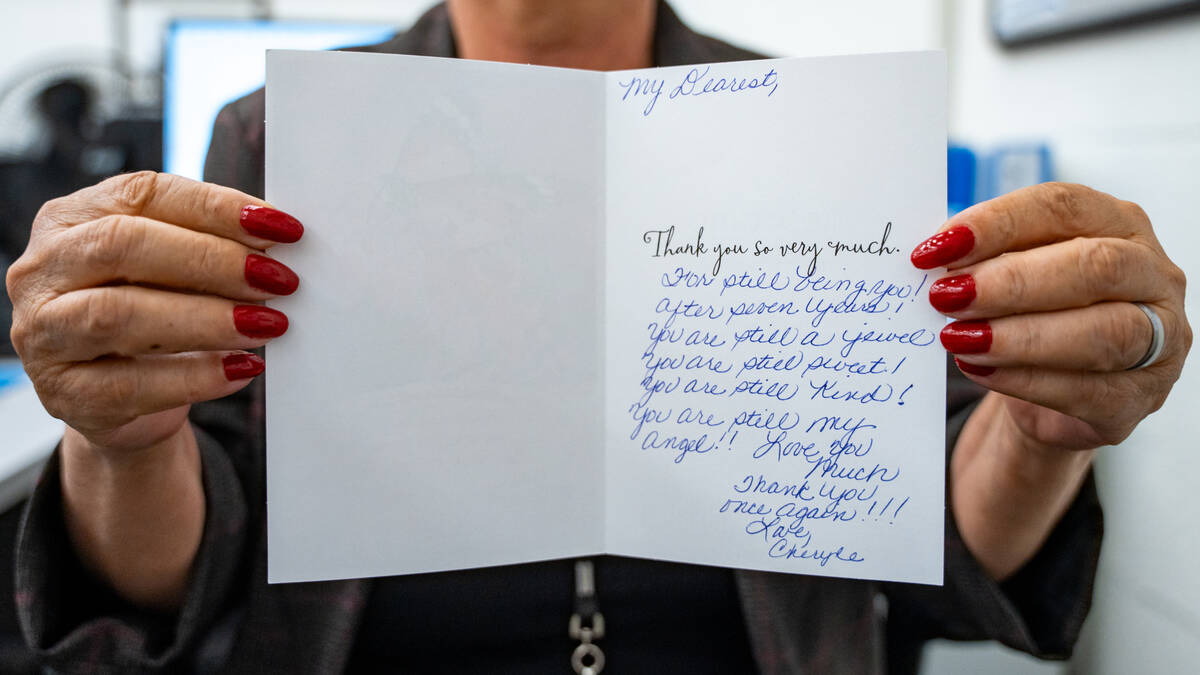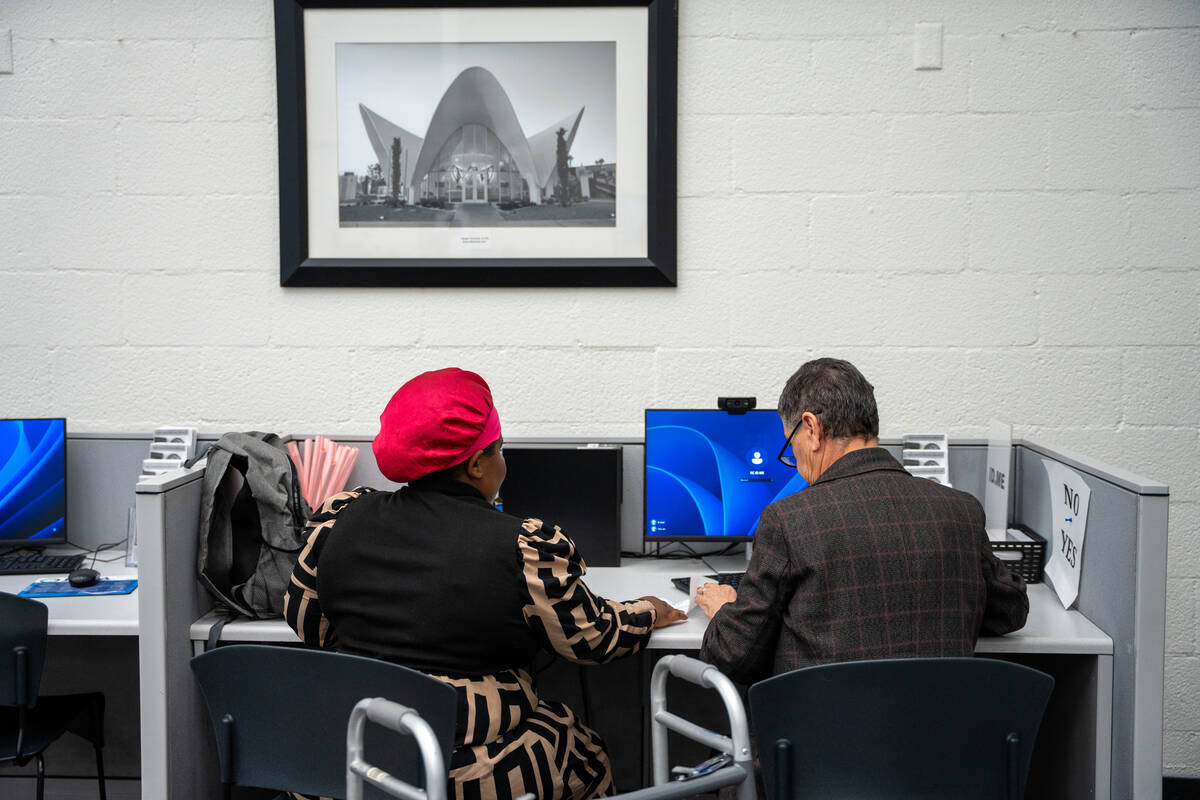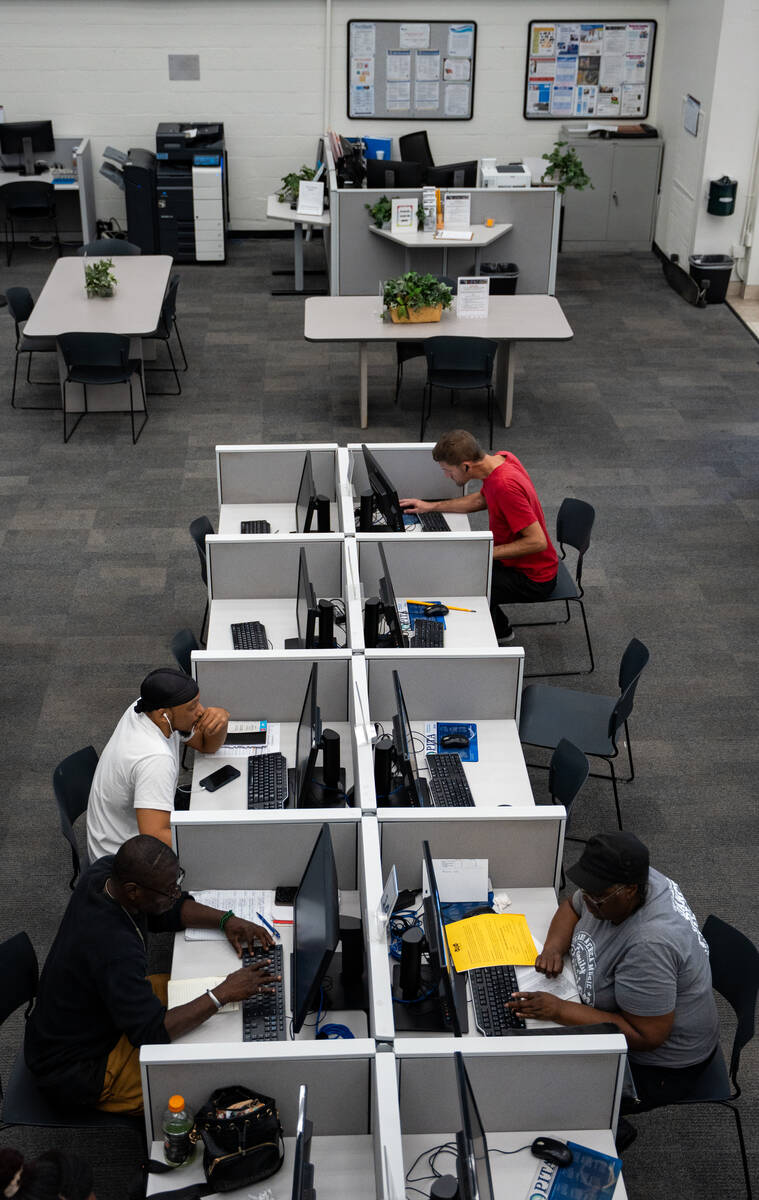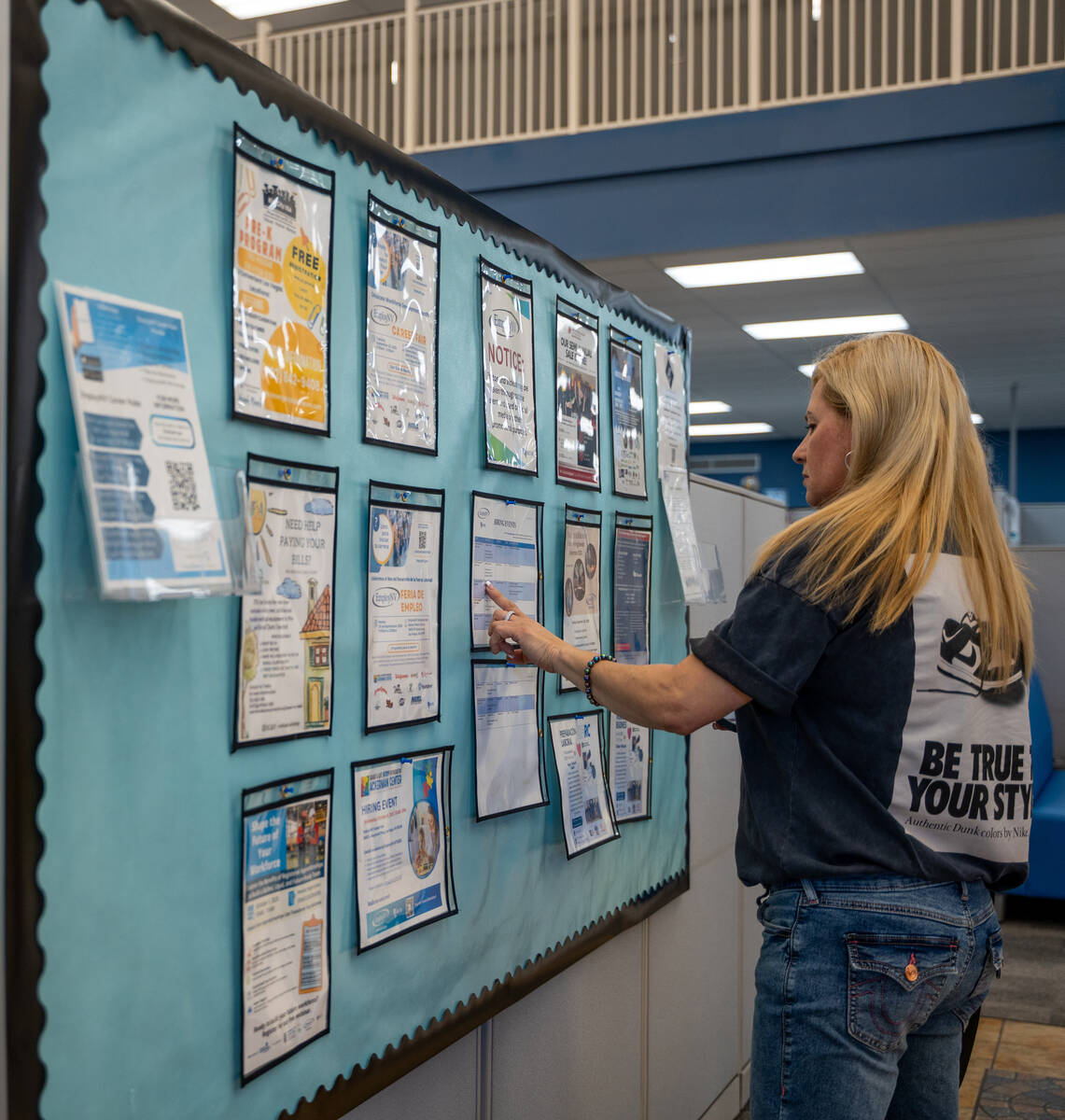‘Mismatched’ expectations and reality frustrate job hunters, hiring managers
Bogdan Popa was feeling discouraged at a September job fair at Boulevard Mall. He was out of work, and he wanted to stand out among job-seekers by meeting recruiters in person.
Instead, he kept being directed to online applications. The job search was making him depressed, he said.
“This is the first time I’ve been in a situation where things are almost impossible,” the Las Vegas resident said. “When you apply for a job, you either go in person so they can see you — but whereas you go online, they don’t know you.”
Popa said he lost a job as an HVAC technician during a probationary period and has been looking for work in that field or in energy assessment, warehousing or security. He guessed he’s applied to up to 20 positions since he became unemployed, including some roles he found at the job fair, but he has only had a handful of interviews.
“I know there’s something out there, but I can’t seem to reach it,” he said.
Meanwhile, some employers say they’re dealing with hiring challenges of their own.
Jenelle Hann, director of human resources at the traffic control firm Parking and Transportation Group, said she is constantly hiring for front-line, $13-an-hour roles to direct traffic at large-scale events including the Formula One Las Vegas Grand Prix.
She said she has found that many people treat the job as gig work or find they don’t want to keep working outside in the heat. She also struggles to find qualified candidates for positions that require specialized certifications.
“Previously, even for the front-line staff, people were just knocking down the door and working two and three jobs to make it,” Hann said. “Now they’re like, this one job doesn’t pay enough. I’m just not gonna work. I’m not really sure how they’re surviving, but I think that applicants are being more selective in things they’re doing.”
Interviews with economists, applicants and employers describe a challenging labor market in the Silver State. Despite one of the highest unemployment rates in the nation, economic indicators show that hiring remains active, though at a rate far slower than the boom following the COVID-19 pandemic lockdowns. The apparent contradiction comes from a broader misalignment and lingering effects of pandemic layoffs and the frenzied hiring during the economic recovery.
Stagnating job market
David Schmidt, chief economist for the Nevada Department of Employment, Training and Rehabilitation, said the mismatch between expectations and reality for employers and job seekers was not surprising to him. He said it is a continuation of the labor market the state has been experiencing for the past year.
According to the July job openings and labor turnover report by the U.S. Bureau of Labor Statistics — the most recently available state data — there were about 4,000 more employees who left or lost their positions than employees hired, leaving employers to fill at least some of those jobs.
In July, the rate of job openings, measured as a percentage of total employment, reached 4.1 percent in Nevada, according to the report. The quits rate, which measures only voluntary job separations, was 2.2 percent.
The combination suggests employees are holding onto their jobs even as employers are looking for workers. It’s a far cry from the third quarter of 2021, when the job opening rate reached a high of 9.3 percent in July and the quit rate reached 4.6 percent.
“We’ve come out of COVID. We’ve come out of the big buildup in jobs. We’ve come out of the huge surge in job openings that we had, and employment growth has been slowing down,” Schmidt said. “We are getting into a tighter market, but what we’re not seeing is a big reduction in the demand for labor.”
‘There is desperation in the market’
Popa said his job search has him thinking about advice for workers considering leaving their jobs.
“I would say, don’t leave your job if you want to get another job,” he said. “If you want to get more money, get a second job while you still have your other job because you don’t want to lose the job that you’re at. It’s hard to find a job after you quit.”
That “job hugging” behavior is common among job seekers across industries, said Ryan Berger, the Las Vegas branch director at staffing firm Robert Half. The company works with employers and job seekers in administrative, customer support, accounting, finance, technology and legal roles.
“There is desperation in the market right now, and we can all feel that,” Berger said. “But there are just so many job seekers that it may not even be that you’re not qualified for the job. You are likely more than qualified for the position, but you may be one of thousands at this moment in time.”
Online applications frustrating
Application processes often leave job seekers frustrated. At the same job fair as Popa, Las Vegas resident BerQuisha Henry said she wanted to avoid the hiring computer systems or artificial intelligence screening layers but, like Popa, she noticed that some employers there only directed people to their online applications.
Henry said she had been looking for work since May. She has a bachelor’s degree in psychology and experience working in schools but felt she had to look for other jobs to pay bills.
“It can be depressing for my generation,” Henry said. “We bought that whole, ‘go to school, get a degree, get a job’ — and for it to not turn out like that, it can be kind of pressing knowing that you’re capable of so much, but having to reduce yourself to mindless, hourly work.”
Job seekers in Nevada could be facing this pinch because of where they are applying, said Andrew Woods, director of UNLV’s Center for Business and Economic Research. A 2024 survey of unemployed Nevadans by CBER found that 58.4 percent of respondents were looking to change industries, primarily toward work in transportation, hospitality and administration.
The study, which was published in August, found that there was notably less interest in health care, the sector with the highest job growth potential in Southern Nevada. Woods said the friction could be indicative of inadequate awareness of those jobs, limited access to training or a broader misalignment in the labor market.
“This is the same mismatch we saw coming out of COVID, where we saw a strong demand in leisure and hospitality to return to work, and workers being a bit reluctant to get back into face-to-face interactions,” he said.
Sifting through resumes
Qualified labor remains one of the largest problems for small businesses, according to monthly surveys from the National Federation of Independent Businesses. Of the 58 percent of business owners who were hiring in September, 88 percent reported few or no qualified applicants for the positions they were trying to fill, according to survey results.
For Bill Rebensdorf, operations manager at Machining Specialist Inc. in Las Vegas, his search for a conventional machinist at the business-to-business shop has gone on for four months with no applicants.
He said he has job ads out in Phoenix and Orange County, California, but even temp agencies struggle to find the talent needed. Past attempts to hire, even with incentives like relocation assistance, have fallen flat, he said.
Rebensdorf said it could be complicated by the niche skills needed for the work. But other roles he’s hired for have also resulted in applicants whom he suspects are not reading the job posting close enough.
“I have most recently resorted to, ‘Are you sure you meant to apply for this?’” he said. “I don’t know where to go. Do we start going into California and trying to poach people? Because we’re in need.”
Jobs are tighter in the the leisure and hospitality industry, according to BLS data. Carson Kitchen general manager Brendon Young said the downtown restaurant recently hired three people, making them fully staffed. He said he’s noticed employers seem to have more leverage as businesses downsize or workers look for second jobs, bringing more people into the labor market.
“After COVID, it was really hard on the employer side of things,” he said. “We weren’t getting anyone to apply. The people who did apply were not necessarily the most qualified. Now, whenever we do need to hire, we have a lot of people apply — qualified applicants as well.”
Breaking through the noise
The labor market uncertainty has led to an uptick in seasonal and contract work, Berger, the Robert Half branch director, said.
“I think companies in general, the overall consensus is tiptoeing, rather than taking large steps and making large investments where you might normally see,” Berger said. “I think they want to see where the chips are going to fall before they make these capital investments and full-time hires.”
Experts say getting ahead of hundreds of applicants — or past the first screening layer of AI — could come down to having a resume tailored to the job posting. Tia Hawkins, office manager of the EmployNV Career Hub on Maryland Parkway, said the state employment resource center advises people to look for key words in the advertisement to maximize the chances of getting their applications to a human-reviewed step.
“It can be a difference between a word, like ‘guest’ or ‘customer,’” she said. “If I’m looking for guest services and you put ‘customer,’ you can definitely get overlooked.”
Others advise job seekers keep trying to get out there and use connections instead of applying online. Destiny Erazo, human resources director at El Cortez hotel-casino, said her team regularly hires for food and beverage and security. Many successful candidates came to the property to inquire about openings.
“I feel like Vegas is very different, at least downtown,” she said. “I feel like it’s a lot more local, a lot just more raw, and you can really have those conversations with people just face to face, rather than just going and applying online. So, (don’t) be afraid to just go in and ask.”
Schmidt, the state economist, said the larger market mismatch could be as simple as employers being more selective while employees look for jobs in the wrong places.
“It’s because we don’t put 10,000 people into 10,000 jobs,” he said. “One person finds one job at one point in time, and you have to do that process 10,000 times to really make those connections happen.”
Contact McKenna Ross at mross@reviewjournal.com. Follow @mckenna_ross_ on X.



